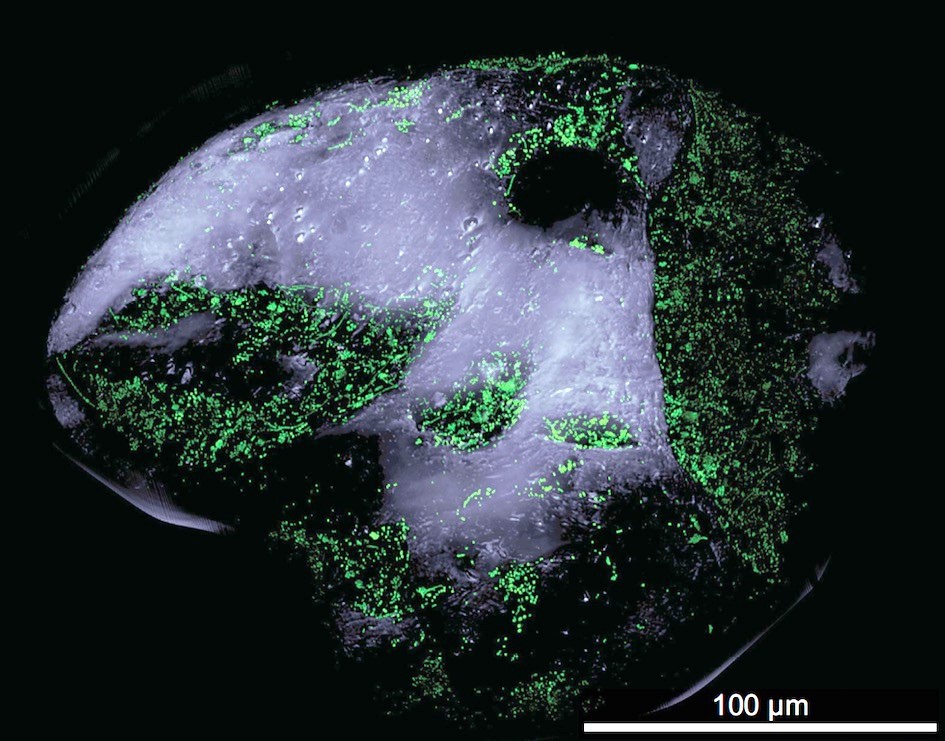How many bacteria live on a grain of sand?

The old theological question of how many angels can fit on the tip of a needle has never been answered satisfactorily (only Christian Morgenstern had a conclusive thought on this). But it has been discovered how many bacteria colonise a grain of sand: Up to 100,000 per grain!
If you like juggling with large numbers, you will certainly be tempted by the question of how many microbes inhabit a beach castle or sit on the countless grains of sand of endless, sea-washed beaches... Incidentally, Antonie van Leeuwenhoek, the discoverer of bacteria, discovered almost 350 years ago that more than 100 million of these "little animals", as he called them at the time, together would be just the size of a grain of sand. But which microbes live on the grains of sand, and how can they survive there when waves churn up the sandy seabed? Grains of sand are not smooth all round, but have cracks and depressions. The microbes huddle in them and are protected from collisions with other grains of sand, are not washed away by the wave-generated seawater or grazed by hungry protozoa. The best places are quite tight. The microbes are only about 0.5 µm (thousandths of a millimetre) apart, just half the thickness of a bacterium. However, they do not sit on top of each other, but share the colonisable surface.
The microbial community is a colourful mix. There are thousands of species on each grain of sand, mainly bacteria, with archaea making up the smaller proportion. Less than two per cent of the species make up more than half of all microbes. This cultural diversity has an enormous advantage: almost every conceivable metabolic function is represented, and the microbial population of the sand grains always has a suitable "answer" ready for the changing conditions of the marine ecosystem. Sand acts like a huge filter for substances washed in.
Incidentally, the population of a single grain of sand could only be analysed using genetic methods. Under the microscope, most species look very similar. For this purpose, the entire DNA of the sand grain inhabitants was isolated and a specific section of the genome, which all microorganisms contain, was amplified using the PCR technique (polymerase chain reaction). The characteristic DNA sequence of the 16S RNA, a component of the ribosomes (the synthesising machinery for proteins), is particularly suitable for the classification and differentiation of microbes. In this way, it was possible to discover between 3400 and 6000 different species on the individually analysed grains of sand.
Read more:
C. Morgenstern, Gedichte: Scholastikerprobleme
D. Probandt, T. Eickhorst, R. Amann, K. Knittel (2017) Microbial life on a sand grain: from bulk sediment to single grains. The ISME Journal, 12, 623-633
© Text: Harald Engelhardt / VAAM, engelhar[at]biochem.mpg.de, Nutzung gemäß CC 4.0;
Figure: Colonisation of a grain of sand with microbes (coloured green), © Probandt et al. (2017) Use according to CC 4.0,

